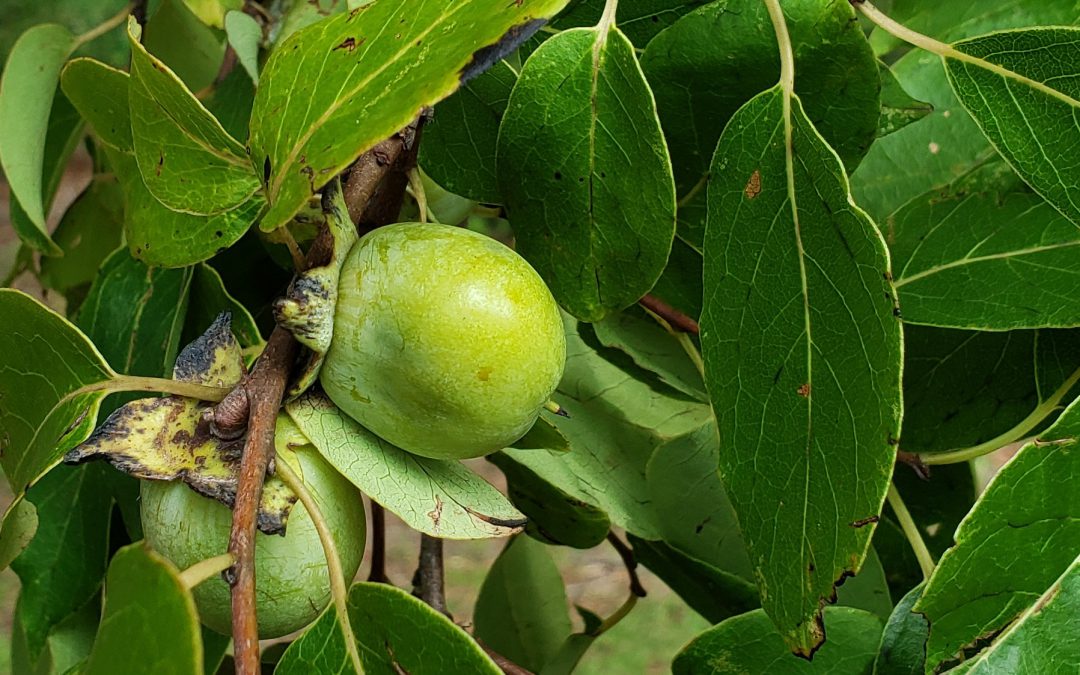
by Mark Mauldin | Oct 10, 2019
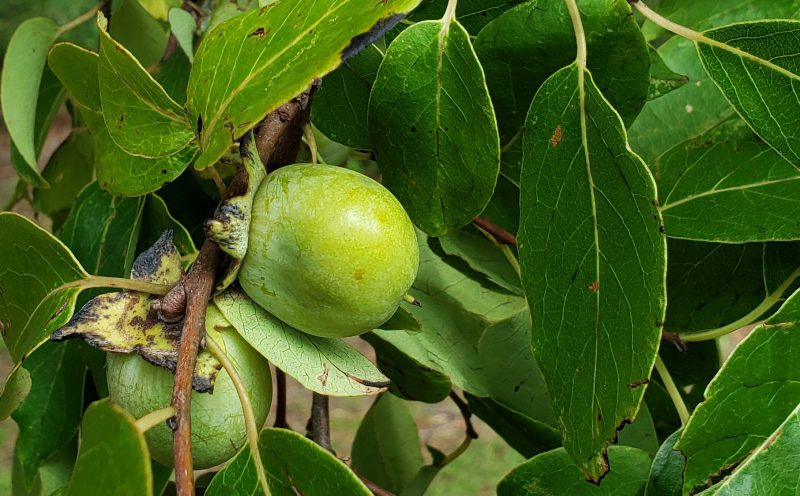
Protecting and promoting plants that produce soft mast, like this wild persimmon, can be a crucial step in improving wildlife habitat. Note: This time of year persimmons will be orange, the picture was taken earlier in the summer.
Photo Credit: Mark Mauldin
Landowners frequently prioritize wildlife abundance and diversity in their management goals. This is often related to a desired recreational activity (hunting, bird watching, etc.).
In order to successfully meet wildlife related management goals, landowners need to understand that animals frequent specific areas based largely on the quantity, quality and diversity of the food and cover resources available. Implementing management strategies that improve wildlife habitat will lead to greater wildlife abundance and diversity.
Herbivorous wildlife feed on plants, mostly in the form of forages and mast crops. All wildlife species have preferences in terms of habitat, especially food sources. Identifying these preferences and managing habitat to meet them will promote the abundance of the desired species.
Herbaceous plants, leaves, buds, etc. – serve as forages for many wildlife species. Promoting their growth and diversity is essential for improving wildlife habitat. Three common habitat management practices that promote forage growth include:
1) Create forest openings and edges; forested areas with multiple species and/or stand ages, areas left unforested allowing for increased herbaceous plant growth.
2) Thinning; open forest canopy allowing more light to hit the ground increasing herbaceous plant growth and diversity.
3) Prescribed fire; recycle nutrients, greatly improve the nutritional quality of herbage and browse, suppress woody understory growth.
Mast – the seeds and fruits of trees and shrubs – is often one of the most important wildlife food sources on a property.
Hard mast includes shelled seeds, like acorns and hickory nuts and is generally produced in the fall and serves as a wildlife food source during the winter.
Soft mast includes fruits, like blackberries and persimmons, and is generally produced in the warmer months, providing vital nutrition when wildlife species are reproducing and/or migrating.
Making management decisions that protect and promote mast producing trees will encourage wildlife populations.
Landowners can make supplemental plantings to increase the quantity and quality of the nutrition available to wildlife. These supplemental plantings (food plots/forage crops and mast producing trees) can be quite expensive and should be well planned to help maximize the return on investment.
Key points to remember to help ensure the success of supplemental wildlife plantings.
- Select species/varieties that are well adapted to the site.
- Take soil samples and make recommended soil amendments prior to planting.
- Make plantings in areas already frequented by wildlife (edges, openings, etc.).
- Food plots should be between 1 and 5 acres. Long, narrow designs that maximize proximity to cover are generally more effective.
Habitat management and other wildlife related topics are being featured this year in the UF/IFAS building at the Sunbelt Ag Expo. Make plans to attend “North America’s Premiere Farm Show” and stop by the UF/IFAS building, get some peanuts and orange juice and learn more about Florida’s Wildlife.
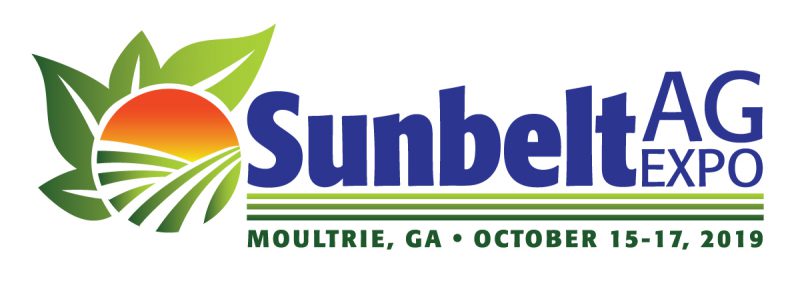 If you have any questions about the topics mentioned above, contact your county’s UF/IFAS Extension Office or check out the additional articles listed on the page linked below.
If you have any questions about the topics mentioned above, contact your county’s UF/IFAS Extension Office or check out the additional articles listed on the page linked below.
EDIS – Wildlife Forages
A significant portion of this article was summarized from Establishing and Maintaining Wildlife Food Sources by Chris Demers et al.
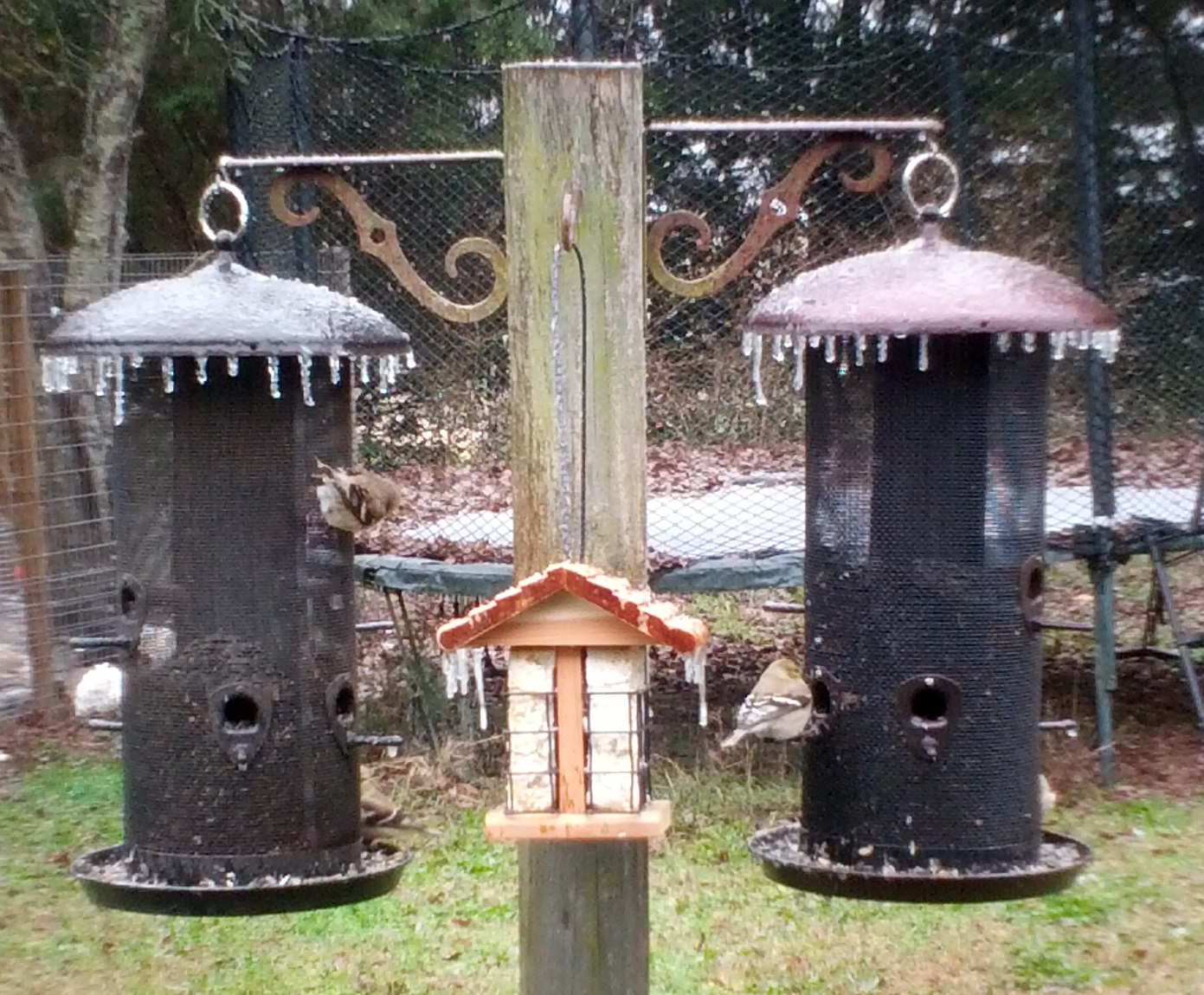
by Judy Biss | Feb 2, 2014

Even though adapted to weather extremes, these migratory American goldfinches (Spinus tristis) appreciated the food and cover provided in this backyard. Photo by Judy Ludlow
North Florida experienced a weather delight (or distress depending on your point of view!) this week in the form of freezing rain and snow! The words “Florida” and “snow” are two words most people would not place together in the same sentence, but you may be surprised to learn that snow has been documented a number of times in Florida as revealed by records as early as 1891. In Tallahassee, measurable snow has not fallen since 1989.
The following information is taken from the National Weather Service Weather Forecast Office Tallahassee, FL about the history of Snowfall in Tallahassee: Several winters ago, NWS Tallahassee Climate Focal Point, Tim Barry, responded to an inquiry from a reporter concerning snow climatology in Tallahassee. Some of those questions and answers are listed below.
In ten-year intervals, how many times has it snowed in Tallahassee Florida?
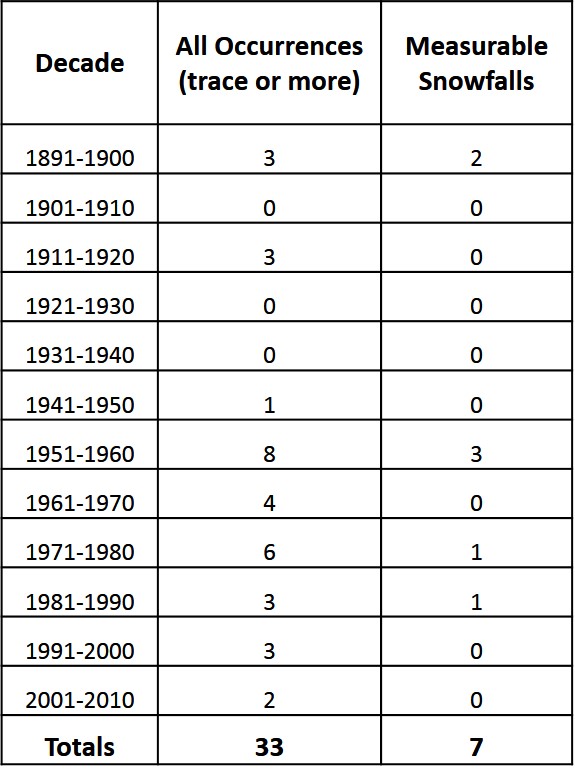 How frequently does Tallahassee see snowfall?
How frequently does Tallahassee see snowfall?
From the information provided in the 1st question, we see that it snowed 32 times in Tallahassee since 1891. Please note that all but 7 of these occurrences were only Trace amounts. If we were to divide the period of record (117 years) by 32 we would get a frequency of once every 3.66 years. But as you can see from above, the more frequent occurrences of snow in the 50’s ,60’s and 70’s have skewed the results. The return period for measurable snow is just once every 17 years. The most snow recorded in a 24-hour period was 2.8″ from February 12th – 13th, 1958.
Any interesting or exciting facts about Tallahassee winters?
There is a significant difference between the climate of north Florida and the southern portions of the peninsula. On average, we experience 35 days with minimum temperatures at or below freezing with most of these occurring from December through March. The coldest temperature ever recorded in Tallahassee was -2 F on February 13th 1899. More recently, we dipped down to 6 degrees F on January 21st, 1985.
Florida’s wildlife, although adapted to Florida’s weather, will thrive given the added boost of backyard habitats planned for their benefit, especially during these winter weather extremes! During the winter, Florida’s native, resident, wildlife species are also joined by species which are here temporarily as they migrate through our state. The hundreds of American goldfinches (Spinus tristis) outside my window are one example.
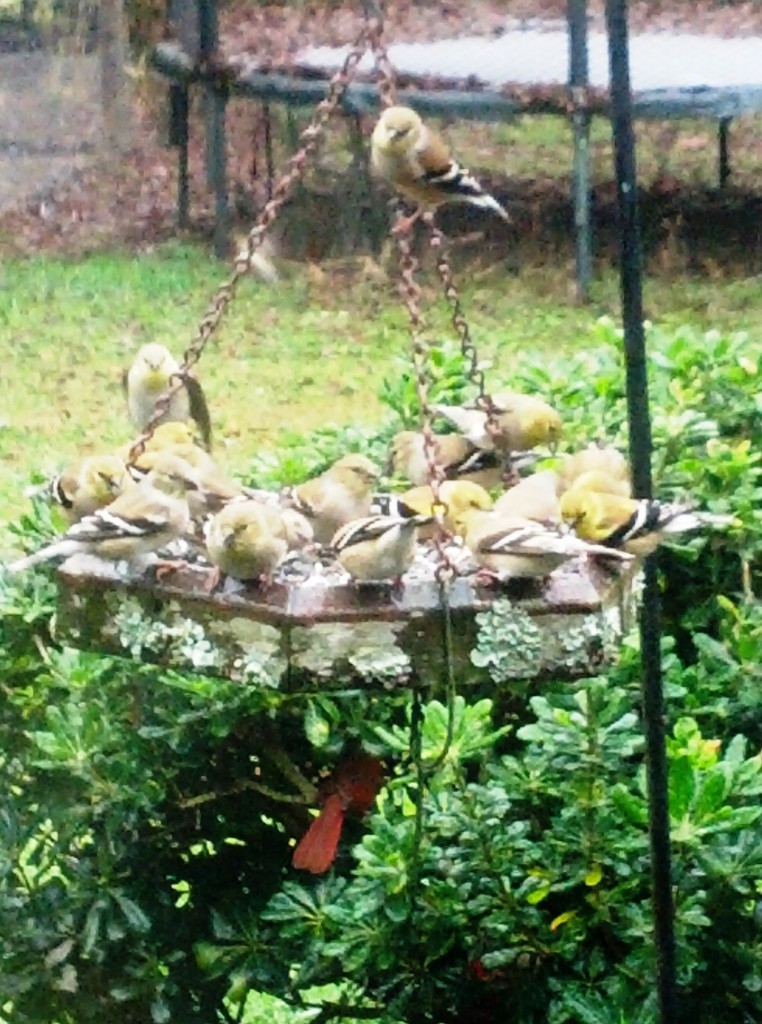
Do you see the red cardinal in the shrub? A variety of cover strategically placed near food sources helps minimize predation and provides protection from weather extremes. Photo by Judy Ludlow
When growing your backyard habitat, think about recreating features which are naturally provided in undisturbed habitats, but only on a smaller scale. To flourish, wildlife need adequate nutritious foods, functional cover, and clean water. Locating food close to cover minimizes the exposure of foraging wildlife to severe weather conditions and to predation; these two factors account for a large percentage of mortality. Cover comes in the form of trees, shrubs, brush piles, etc. of varying heights and sizes.
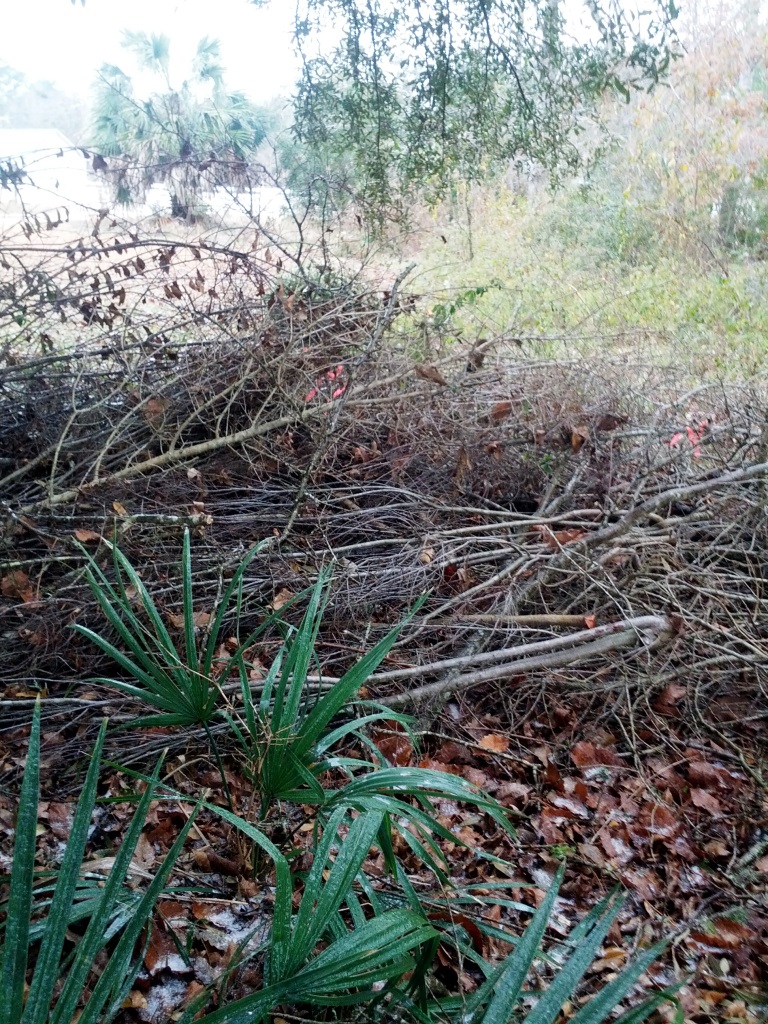
Brush piles such as this one provide valuable wildlife habitat for many species. Photo by Judy Ludlow
The following information is from the Florida Fish and Wildlife Conservation Commission’s publication: Planting a Refuge for Wildlife.
Cover: Breeding, nesting, hiding, sleeping, feeding and traveling are just a few of the necessary functions in an animal’s life which require protective cover or shelter. Often plants used for cover double as food sources. Strategic placement of cover is very important in that it reduces exposure to weather extremes and provides escape from predators.
Food: All animals get their energy for survival from plants or other animals. The ideal wildlife management plan uses natural vegetation to supply year-round food – from the earliest summer berries to fruits that persist through winter and spring (such as sweetgum, juniper and holly). You will attract the widest variety of wildlife to your land by using native plants to simulate small areas of nearby habitat types. The “edges” where these habitat types meet will probably be the most visited areas in your neighborhood.
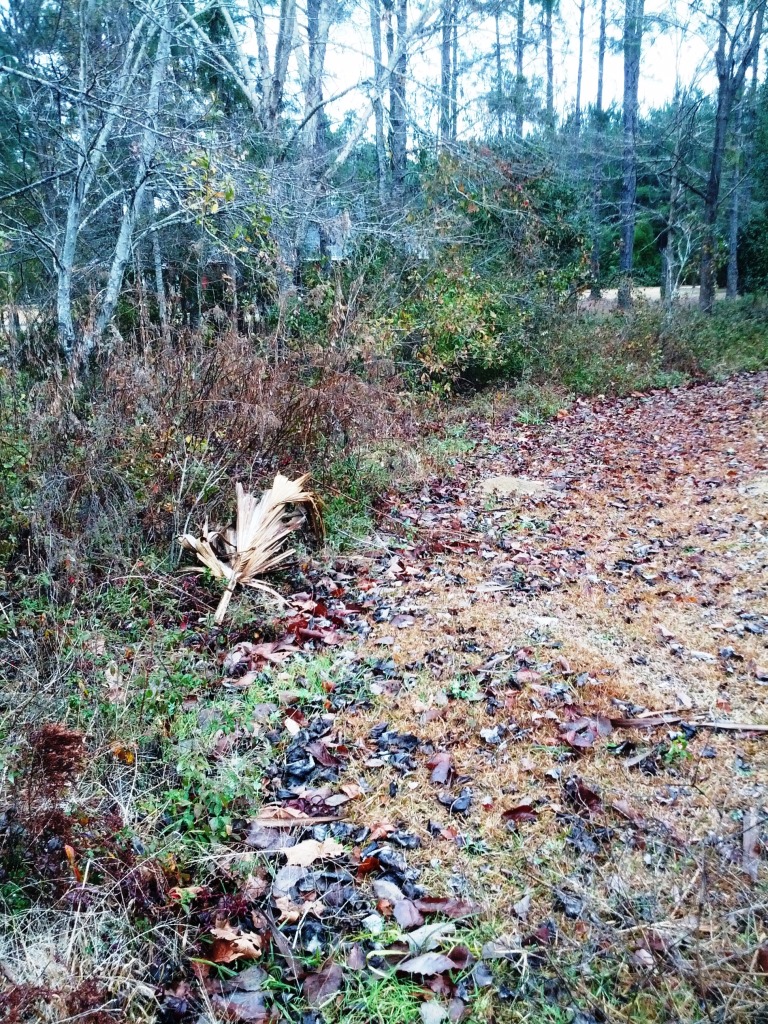
The boundary between two habitats such as between this lawn and small wooded area, creates an “edge effect” which is important to wildlife. Photo by Judy Ludlow
If you are interested in learning more about this topic, please read the following publications and, as always, please contact your local UF/IFAS Extension Agent if you have any questions.
Planting a Refuge for Wildlife
Landscaping for Wildlife
A Drop to Drink
Eight Ways to Double the Bird Species at Your Feeders
Landscaping for a Song
Making Your Backyard a Way Station for Migrants
On Your Own Turf
Plant Berry Producing Shrubs & Trees
Plant Wax Myrtles
There’s Life in Dead Trees


 If you have any questions about the topics mentioned above, contact your county’s UF/IFAS Extension Office or check out the additional articles listed on the page linked below.
If you have any questions about the topics mentioned above, contact your county’s UF/IFAS Extension Office or check out the additional articles listed on the page linked below.




